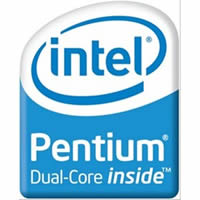Difference between Dual Core and Intel i3
Key difference: A dual-core processor is a type of a central processing unit (CPU) that has two complete execution cores. Dual core has become synonymous with Intel Pentium Dual Core. It may sometimes also be used to refer to Intel’s Core 2 Duo line. Intel Core i3 is a type of dual-core processor. It is in fact the successor to the Intel’s Core 2 Duo line.

A dual-core processor is a type of a central processing unit (CPU) that has two complete execution cores. Hence, it has the combined power of two processors, their caches and the cache controllers onto a single chip. This makes the dual-core processors well-suited for multitasking.
Dual-core processors have two cores that have an independent interface to the frontside bus. Each core has its own cache. This allows the operating system to have sufficient resources to handle intensive tasks in parallel.
Dual Core is a generic name for any processor with two cores from any manufacture. However, due to marketing and Intel’s predominance in the CPU market, dual core has become synonymous with Intel Pentium Dual Core. It may sometimes also be used to refer to Intel’s Core 2 Duo line. Intel Core i3 is a type of dual-core processor. It is in fact the successor to the Intel’s Core 2 Duo line.
The main difference that sets i3 apart from the other dual cores is that the latest generation of i3 processors has a 22nm architecture. This is in comparison to the 45nm architecture which was the previous norm. i3 was originally released with a 32nm architecture, which was still impressive. The smaller width of the chip allows more transistors within the same silicon chip.
The size of the i3 also allows for the integration of the Direct Media Interface (DMI) and the Graphics Processing Unit (GPU) within the chip. The GPU makes the processor perform better and more uniformly on different motherboard brands. The DMI, on the other hand, shortens the electrical path between the core and the actual components like the RAM, hard drives, ports, and other resources.

This sets it apart from previous dual-cores. This also allows the i3 to consume less power, which leads to less heat generation, in addition to better and faster performance. The lower power consumption is especially a plus in laptops, as it increases battery life.
As oppose to the previous dual core processors, i3 also supports Hyper-Threading Technology. Hyper-threading duplicates certain sections of the processor that store the architectural state but not duplicating the main execution resources. This allows the processor to appear as two processors, hence effectively scheduling two threads or processes simultaneously. The 3rd generation of i3 processors host 4 threads.
A comparison between the two processors as per the Intel website:
|
|
Intel Pentium Dual Core (Renamed Intel Pentium) |
Intel Core i3 |
|
Intel Smart Cache |
3MB |
3MB |
|
Intel Turbo Boost Technology |
No |
Yes |
|
Intel Hyper-Threading Technology |
No |
Yes |
|
# of Cores |
2 |
2 |
|
# of Threads |
2 |
4 |
|
Silicon |
22nm |
22nm |
|
Clock Speed |
2.6 - 3.1 GHz |
1.8 - 3.4 GHz |
Image Courtesy: pcpros.com.mx, doityourselfhtpc.wordpress.com









Comments
Taufiq patani
Wed, 02/21/2018 - 15:06
Anonymous
Tue, 08/30/2016 - 16:05
vijay soni
Tue, 01/12/2016 - 10:56
Muhammad Arif
Thu, 10/29/2015 - 08:19
Muhammad Naveed
Tue, 09/22/2015 - 17:45
Solanki Shailesh
Wed, 09/09/2015 - 14:55
Nilesh
Fri, 08/21/2015 - 13:22
very grateful information ....................thanks .
Aejaj shaikh
Fri, 01/02/2015 - 12:46
Very informative note. thanks a lot.
vinayrgowda
Tue, 11/25/2014 - 12:47
Very informative note. thanks a lot.
Kuldeep Singh Sahu
Sat, 10/18/2014 - 08:55
Pages
Add new comment